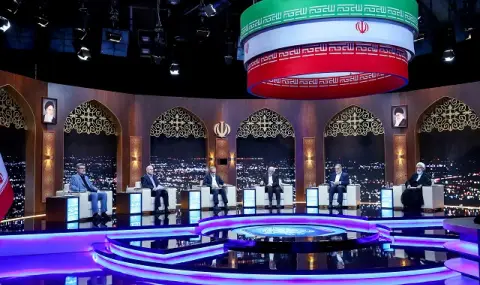If we look beyond the vast differences in geographical, political and economic scale, we can ask ourselves the following question: Why is China relatively free from the captivity of ideology and has been able to reinvent itself and transform itself into an economic and political power "with a capitalist body and a communist head", while Iran remains mired in ideological stagnation that makes fundamental change fraught with risks and a sure door to collapse? This is what the London-based Saudi newspaper "Ash-Sharq al-Awsat" asks.
Over the centuries, China has demonstrated a unique pragmatic expertise through its ability to adapt and change without losing control of a strong central authority that has always prioritized continuity and survival. Arguably the slogan launched by Chinese leader Deng Xiaoping regarding his economic reforms in 1978, launching an experiment to "redefine" of communism, contains the essence of this approach, which summarizes the character of the state in China. "It doesn't matter whether the cat is black or white, as long as it catches mice,'' Deng said, revealing the complex path that allowed China to embrace a market economy while maintaining the Communist Party's iron grip on power.
Throughout its history, China has also benefited from the Confucian heritage, whose core values emphasize order, hierarchy and the primacy of the state, which has strengthened China's culture of pragmatic governance. This cultural environment made it easy for the leadership of the Chinese Communist Party (CCP) to justify economic reforms as necessary for the country's survival and to present the embrace of capitalism simply as a means to the ultimate socialist goal of prosperity for all.
In contrast to this continuity in the character of the state in the Chinese experience, in Iran we find profound discontinuity and disorder. The Islamic Revolution of 1978-79 was not only a major political event but also a profound reordering of Iranian society. Khomeinism fused the religious and the sectarian with the political and stuck them together with the glue of revolutionary enthusiasm and a political system that defined the state as a divine mandate and any deviation from its path was considered a betrayal of divinity itself.
Although the state in Iran is not merely a political entity, it is rather an earthly embodiment of the invisible heavenly content. This perception has destroyed the ability to use pragmatic flexibility, as China has done. Any call in Iran for economic or social reform is not only a political danger but also a spiritual danger that elevates calls for change to the level of incredulity. While it is true that the central control of the Chinese Communist Party is clearly similar to the control of the "wilayat al-faqih" (the authority of the jurist-theologian) over Iranian society, Iran's political structure is more complex and fragile. The religious components of the regime in Iran coexist with the republican and military components in a delicate balance that turns any attempt at reform into a risky game.
More importantly, unlike the Iranian experience, the economic success of the Chinese experience provided the Communist Party with a new source of legitimacy and a decisive ability to neutralize its opponents and impose a controversial model: a capitalist economy under communist rule without compromising on national identity or to pay a high price for the ideological impurity of the regime.
Although both China and Iran were suspicious of external threats, their responses differed radically. China derived its immunity and prestige from economic growth and military modernization as a means of countering foreign influence, and used nationalism and economic success to unify the country, unafraid of the consequences of the profound structural change accumulated since 1978. In contrast, the Iranian leadership uses the idea of external threats, especially from the US and its allies. This remains a justification for his strict ideological stance, which forbids change, fearing that any ideological modification will weaken Iran's ability to resist foreign influence and lead to the collapse of the revolutionary state.
Chinese Communism has proven to be adaptable, able to evolve in response to changing circumstances while maintaining the core of the Communist Party's strength. It uses its strategic clout to build a balanced relationship with its opponents, building bridges while preserving differences and competition. As for Iranian religious ideology, it is deeply rooted in the problematic identity of the state, which believes that any fundamental change threatens to destroy the structure of the Iranian revolution, which could lead to the fall of the regime. It should be noted that the beginning of change in China coincided with the birth of the Iranian Revolution in 1978 and after the rule of the Chinese Communist Party, which lasted from the autumn of 1949.
Does Iran still have time to turn the tide? It appears that the path to reform for Iran is not just a challenge, but rather an existential one, as the regime's survival depends on maintaining its ideological purity even as it increasingly isolates itself from the international community and continues to squander its economic resources in light of an appalling lack of minimal adaptability. Iran today seems closer to the experience of the Soviet Union than to China, as noted by former Israeli Prime Minister Naftali Bennett.
Like Soviet Russia, Khomeini's Iran suffers from ideological calcification, corruption and social disconnection, and like it may spell its own end.
